The content of the article
When a new pet appears in the house, you need to carefully approach its conditions of detention. After all, when we take responsibility for the life and health of an animal, it is necessary to bring its food closer to the natural, to equip its home, to take into account its character and instincts. Djungarian hamster is a very cute animal with a good disposition. Dzhungariki easily go to the contact, although they can be independent. This rodent is distinguished by its special cleanliness and the absence of unpleasant odor, which makes the dzungarika a very popular pet. To the rodent was cozy and comfortable, you need to properly care for him. The first thing you should take care of is home improvement for a new pet.
Dzhungarika dwelling
You can keep a hamster in a cage, aquarium or terrarium. Choosing a home for the future pet, pay attention to the fact that hamsters love to nibble everything.There is no need to choose cells with colored rods, otherwise a part of this dzungarik will simply eat. If you decide to settle the animal in a terrarium or aquarium, do not cover the upper part with dense material. The rodent needs air, so leave the top open. If the sides of the terrarium are rather low and you are afraid that the animal will jump out, cover the dwelling with a metal grid.
The most optimal housing for a hamster is a cage. First, the air circulates there well, which will allow the hamster not to lack oxygen. Secondly, moisture does not form in a ventilated dwelling, which is not recommended for rodents. And thirdly, you will avoid the unpleasant smell that can form in the terrarium. In addition, it is easier to fix any drinkers-feeders-toys to the bars of the cage.
The cage for the jungle should be quite spacious. In addition to the dwelling itself, it is worthwhile to think about how to fill the animal's cage so that the baby is cozy and comfortable.
- Asylum. In nature, the rodent lives in burrows that hide it from predators and prying eyes. Set in a cage a small cozy house in which the dzungarik will sleep.There are plastic, wooden, ceramic and fabric houses for sale. Wood and fabric should not be chosen, they absorb unpleasant odors and can be a source of stench. The plastic house is short-lived - the rodent will gnaw it in a matter of days. But the ceramic dwelling is very convenient, since it is rather difficult to move it from its place. You can line the bottom of the house with small pieces of fabric so that the animal is warm and comfortable.
- Drinking bowl Water is important for any living thing and hamsters are no exception. Some cells are sold with already built-in drinkers, while others are mounted on the bars of the cage. Pour only boiled water into the trough and change it every 2-3 days. Do not allow the drinker to be under the sun - the water may begin to "bloom." No need to leave simple cups of water at the bottom of the cage. An animal can easily flip over capacity, leading to dampness and mold. High humidity in the cage can cause rodent disease.
- Feeding trough. For food, there should be two containers - one for dry food, the second for fresh vegetables and fruits. Wash trough need water, without the use of detergents.It is better to choose ceramic bowls for food - it is much more difficult to turn them over.
- Bedding The cage should be soft and comfortable. In addition, well-chosen litter eliminates unpleasant odor, absorbs moisture and makes rodent life more comfortable. As a litter, you can use sawdust or toilet paper. If you are using sawdust for the first time, look at the reaction of the animal - sometimes some types of wood can cause an allergic reaction in a rodent. It is not recommended to use a newspaper as bedding - printing ink is very harmful for an animal. In addition, when it gets wet, it sticks to the paws and the bottom of the cell. You shouldn’t follow the bottom of the cell with cotton wool either - the jungarist can get entangled in it, which leads to the death of the clamped limbs.
- Toys In the cage of the animal, you can leave rods, branches, various toys. It is hard to imagine a hamster housing without a wheel. This is the best device that can satisfy the need of a hamster in motion. The wheel should be well lubricated so that the animal turns it without any problems. Also pay attention to the fact that the wheel was not large intervals - there may be stuck paw rodent.
These are the main furnishings that should be equipped with your pet's house.
How to feed a jungar
This is another important issue faced by many new owners of this rodent. What to feed the animal so that it is healthy and cheerful, in order to cover the whole complex of vitamins necessary for the rodent?
The simplest solution to the problem is to buy special dry fodder consisting of seeds, corn, oats, various nuts and legumes. Such nutrition as close to natural. In addition, you can pamper your pet with fresh vegetables and fruits - carrots, apples, greens, cucumbers, zucchini, peaches. It is not necessary to give the animal onions, garlic, cabbage and citrus. In addition, in the diet of jungar should be protein foods. Once a week, you can allow the hamster to feast on a small amount of boiled chicken meat. The source of protein can be milk, cottage cheese, quail and chicken eggs. In addition to the greens that you consume yourself (celery, dill, lettuce, parsley), you can treat your pet with green plants - dandelion, clover, plantain. Pet can not be given mint, nettle and sorrel.
I would like to say separately that the animal should not be fed from the human table if you want the rodent to live for a long time and without diseases. No sweet, fried and oily foods. The kid should not eat potatoes, pasta, bread or sweet cookies. In addition, if the animal did not eat the food immediately, after a few hours it should be removed from the cage (except for dry food). It will protect your pet from poisoning with spoiled products.
How to care for the jungar
There are a few rodent care tips to help you make the life of the Dzungarian hamster fun and carefree.
- Do not forget to clean the dzungarik's house regularly. To do this, transfer the rodent into a jar or carrying it for a while so that it does not run away. When changing litter, leave a small amount of “dirty” filler so that the animal has a native smell. You should not wash the hamster's home with detergents - an unfamiliar smell can frighten the rodent. At the same time, it is not recommended to touch the dwelling - move around it. Change litter once a week, and thoroughly wash the cage - once a month. Use for this natural laundry soap.
- Do not even think about bathing the hamster. This animal cleans its fur independently. Water treatments can lead to illness and even death of a rodent.
- Put a few wood sticks in the cage - they are needed by the rodent to grind their teeth.
- Feed the animal twice a day - in the morning and in the evening.
- It is very important to find a good location for the cell. Hamsters do not like sunlight and can even be sick if the cage is under the sun all the time. Also, the cage with the animal should not be placed near the radiators. Leave the rodent cage in a cool and dark place - it will feel great there. In addition, you can not put a cage with an animal on the aisle - a draft can lead to the fact that the animal will often be sick.
- Do not leave a cage with an animal near a microwave, computer, or TV. Loud sounds, and most importantly, harmful radiation, can affect the health of the animal.
- You should not move another hamster to the jungar. The conventional wisdom that the rodent is bored is a common myth. The fact is that hamsters are quite selfish - they are closely watching their territory, separating the area for sleep, feeding and rest.The appearance in the cage of a neighbor can lead to conflict, which can result in the death of one of the animals.
- Dzungarik - pretty shy. He may be frightened by loud noises, high temperature, bright flashes of light. After a fright, do not rush to take a hamster in your arms - it can bite you or a child.
- Do not overfeed the rodent. Feed the animal more than three times a day is impossible. The fact is that hamsters are very prone to gaining excess weight. Under natural conditions, the rodent spends energy, moving a lot to find food for itself. In addition, winter and hunger forced to reduce the daily diet of the animal. The conditions of home habitat mean only eating food, without its search and prey. Remember, obesity in hamsters leads to frequent diseases.
- Give the jungaric the opportunity to run around the room. To do this, offer him a big ball - the hamster will not refuse to roll it. Walking should be short - no more than an hour a day.
- Gradually teach hamster to hands. As soon as the baby gets used to the new house, little by little, gradually (without scaring the animal), take the rodent in your arms. Be careful - he has very fragile bones.If this is not done, the Jungar hamster will become wild and will constantly bite.
These simple rules for caring for a rodent will help you keep a pet without harm to his physical and mental health.
Dzungarian hamster is a wonderful pet, able to conquer even the most hard-hearted heart. The rodent is not just neat and unpretentious - it is friendly to children and other pets. Knowing the details of caring for a jungar, its maintenance and feeding will not be a problem for you.
Video: caring for Jungar hamsters

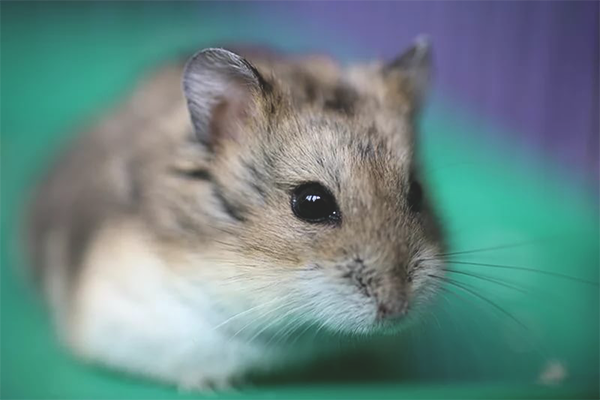
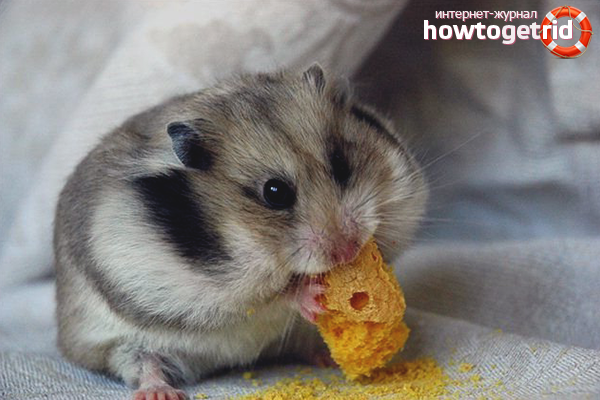

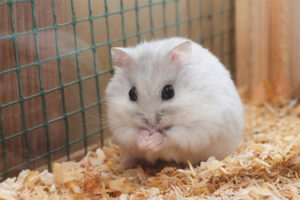

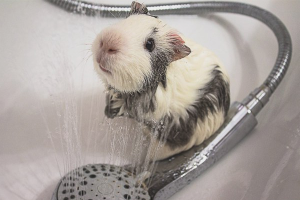

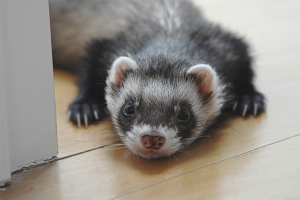
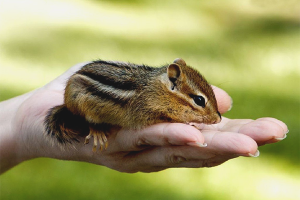
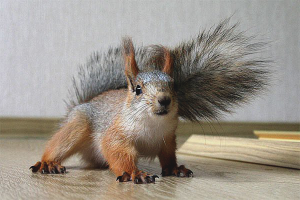
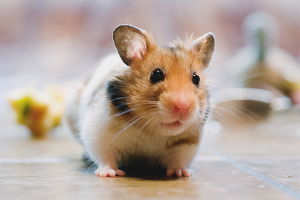
To send